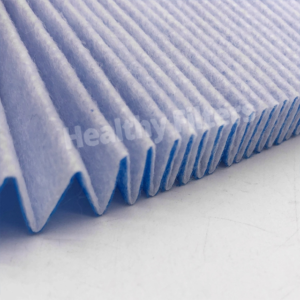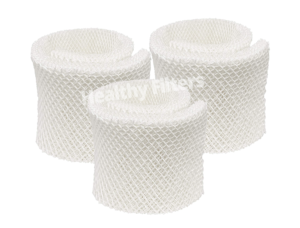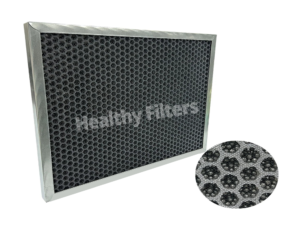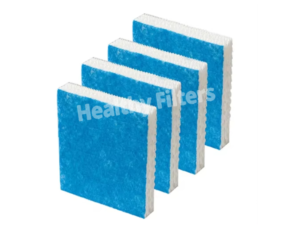Synthetic Fiber Pocket Filter M5 is a standardized filtration device designed for medium-efficiency air filtration. It adopts a multi-layer polyester fiber composite structure and achieves a balance between high dust holding capacity and low energy consumption through a pocket multi-fold design. It complies with the M5 classification (corresponding to MERV 8-10) in ISO 16890 and EN 779 standards, and can efficiently intercept 1-10μm particles (such as pollen, dust, mold spores). It is widely used in ventilation systems in commercial buildings, industrial workshops and clean environments. It is an ideal choice for protecting rear-end high-efficiency filters and extending equipment life.
Core structure and technical parameters
Material and process
Filter material: gradient density polyester fiber (PET) non-woven fabric, the surface layer is anti-statically treated to reduce fiber shedding; the inner layer of encrypted fiber mesh improves interception efficiency.
Bag design: 6-12 independent filter bags are arranged in a V shape. After unfolding, the filtration area increases by 3-5 times, and the dust holding capacity reaches 500-800g/m².
Frame: Lightweight galvanized steel or waterproof cardboard frame, suitable for standard sizes (such as 592mm×592mm, 610mm×610mm).
Performance parameters
Filtration efficiency: PM10 interception efficiency ≥90%, PM2.5 efficiency ≥60% (EN 779:2012 M5 standard).
Initial pressure difference: ≤50Pa (@ rated air volume), low resistance design reduces fan energy consumption.
Temperature and humidity resistance: -20℃ to 80℃; humidity resistance ≤80% (moisture-proof coating optional).
Core advantages
Advantage dimensions Specific performance User value
High cost performance Material cost is 30% lower than glass fiber, supporting large-scale commercial applications Reduce initial investment and maintenance budget
Long life and easy maintenance Dust holding capacity increased by 50%, replacement cycle up to 6-12 months Reduce downtime frequency, reduce operation and maintenance costs by 40%
Environmental protection and safety No risk of glass fiber shedding, RoHS compliant, incineration guaranteed Health of personnel, meet green building certification (LEED)
Flexible adaptation Support customized thickness (50-300mm) and number of bags (6-36 bags) Adapt to different air volume requirements (500-5000m³/h)
Typical application scenarios
Commercial buildings:
Central air conditioning systems in shopping centers and office buildings intercept dust and allergens to improve indoor air quality (IAQ).
Ventilation in hotels and hospital wards reduces the risk of cross infection.
Industrial manufacturing:
Pre-filtration in automobile spraying workshops to protect paint mist treatment equipment;
Food processing plants intercept dust and fibers to meet HACCP hygiene standards.
Public facilities:
School and library fresh air systems to control PM2.5 and bacterial transmission;
Subway station ventilation shafts to prevent sand and insects from entering the equipment.
Selection and maintenance guide
Key selection parameters
Air volume matching: Select the number of filter bags according to the system air volume (e.g. 8-12 bags for 1000m³/h), and avoid over-speed operation (recommended ≤2.5m/s).
Pollution type:
High dust environment (such as woodworking workshop): select thickened filter bags (≥200mm) and anti-static coating;
Humid environment: select waterproof frame and hydrophobic filter material.
Maintenance strategy
Pressure difference monitoring: Install a differential pressure gauge, and the recommended replacement threshold is 150-200Pa (2-3 times the initial value).
Cleaning method: Surface dust can be cleaned with a vacuum cleaner, and water washing or high-pressure backblowing is prohibited (to avoid structural damage).
Replacement cycle:
Low pollution scene (office): 12 months;
High dust load (factory workshop): 3-6 months.
Technological innovation and industry trends
Intelligent integration: some models have built-in RFID tags, supporting digital life tracking and automatic operation and maintenance reminders;
Composite functions: add activated carbon layer (optional), simultaneously adsorb formaldehyde and odor, and expand to multiple pollutant purification scenarios;
Recyclable design: using biodegradable polyester fiber (rPET), reducing carbon footprint by 30%, responding to the circular economy.
Synthetic fiber bag filter M5 takes **”efficient interception, economical and durable, flexible adaptation”** as its core competitiveness, becoming a benchmark product in the field of medium-efficiency filtration. From commercial spaces to industrial workshops, it not only protects air cleanliness, but also promotes the win-win goal of green operations and a healthy environment with sustainable solutions.





